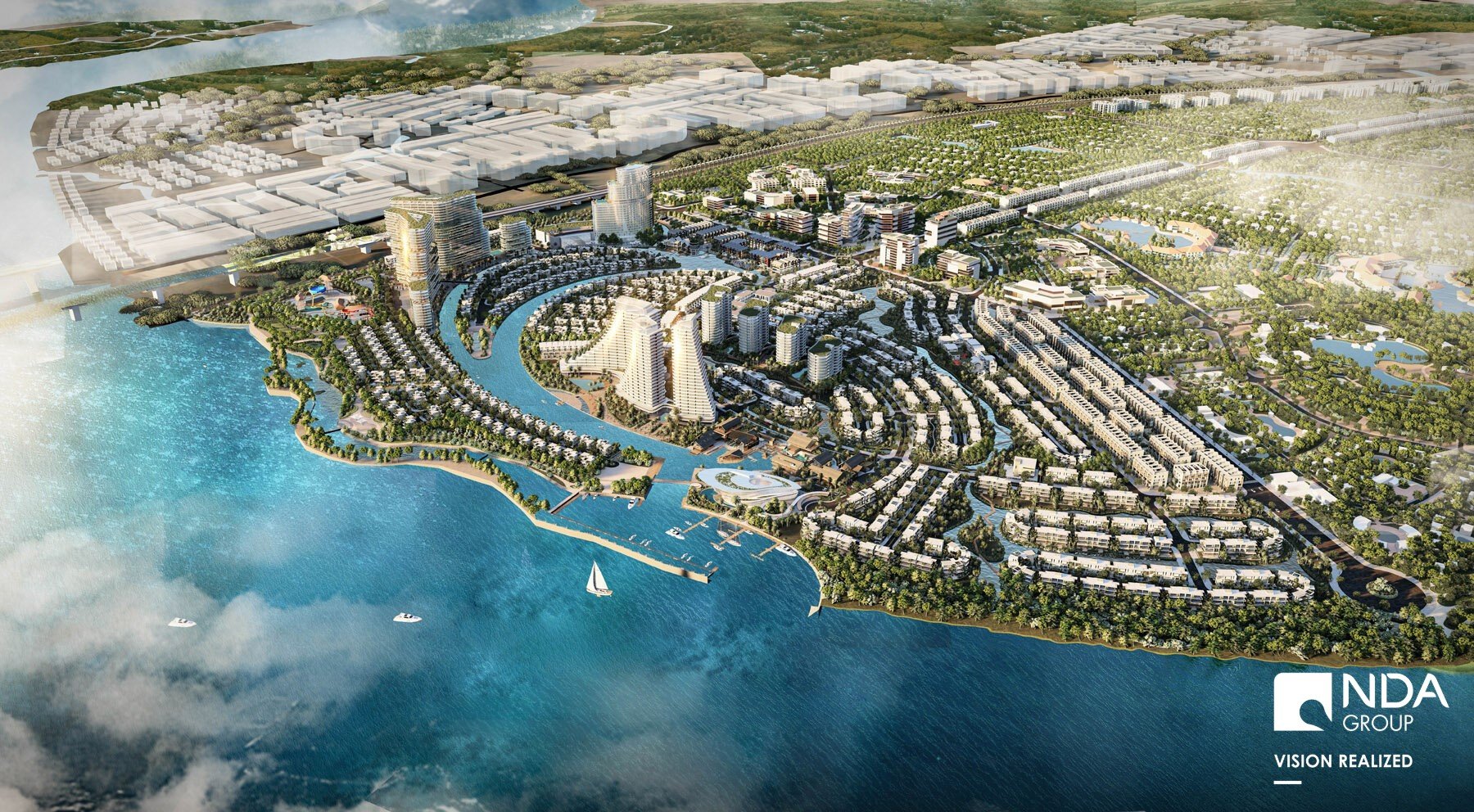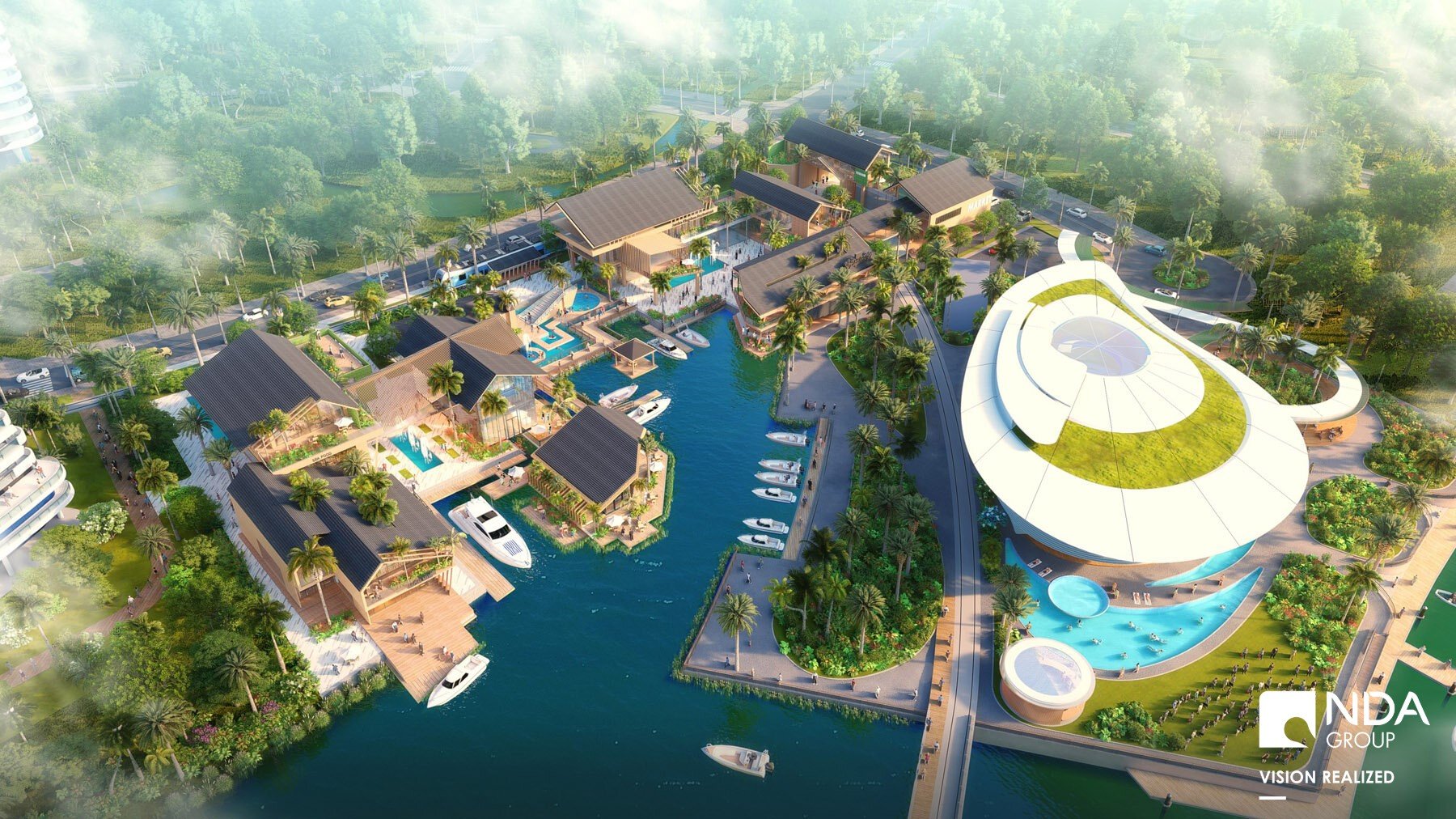Masterplanning for People & Planet
Sustainable Cities of the Future
NDA Group’s work is to design buildings and plan cities. But it is our responsibility to envision and manifest a better future for People & Place.
Through our master planning we work at the juncture of culture, environment, and economy to define the development of cities and their people, and set foundations that will stand the test of time. With an estimated addition of 2.5 billion people in cities by 2050, this task becomes ever more important.
There are two aspects of master planning; one, the physical creation and transformation of spaces, and two, the social plane where we must understand people so as to anticipate their behaviour and guide them into positive actions.
Beihai Ocean Gate Masterplanning illustrates our signature focus on integrating society with nature©NDA Group)
That’s why we are drawn toward the urban design concepts of TOD (Transportation Oriented Development), Compact Cities, and LOHAS (Lifestyle of Health and Sustainability).
TOD prioritizes public transportation, pedestrian, and bicycle access in urban areas to reduce reliance on personal vehicles. This leads to a more compact city form, with high-density, mixed-use developments located near transit stations.
Compact Cities are characterised by high population densities, efficient land use, and efficient transportation systems. This helps to reduce time in transit, and lessen environmental impact of development, and thus promote higher quality of life for residents.
LOHAS values environmental sustainability, social responsibility, personal development, and healthy living. It informs sustainable urban planning, and it caters to aspirational living and makes for serene tourism experiences.
Explore with us as we deconstruct three of our urban planning designs: Ba Ria Eco Town, Beihai Ocean Gate, and Long Tan Tourism Urban Area.
Ba Ria Eco Town
Compact planning lowers environmental impact, saves farmland, and brings communities closer together.
——Emmanuel Delarue, CEO & Founder of NDA Group
Ba Ria Eco Town Masterplanning ©NDA Group
We often see developing cities look to American suburbia as desirable for their size and prestige. However, this urban sprawl prevents the cross fertilization of ideas, people, and culture that cities need to be truly vibrant, not to mention the adverse impacts on health, environment, and economy.
With this in mind, we designed Ba Ria Eco Town in Vietnam along TOD principles, with a 1km radius ring where most activity happens, strongly encourages walking.
A central plaza forms the core of the ring and radiates into commercial, retail, and residential space. This walkability encourages more active lifestyles, but also facilities people flows, exchange, and commerce. Notably, the train station sits on the northern cusp of that ring, ensuring the town isn’t divided into two.
On the outside of the inner ring are tourism spots including the Mangrove Research and Education Centre, resort, and marina. Enjoyed by tourists and residents alike, they’re immersive worlds of excitement and education.
Finally, we complete the sustainable loop by implementing a solar plant that comfortably meets the energy needs of the entire town, and introducing wastewater treatment that allows spent water to flow back into the constructed wetlands, bringing everything back full circle.
Beihai Ocean Gate
We place Beihai’s maritime history as a focal point for its future, and orbit LOHAS living and tourism around it.
—— Alex Marcean, Senior Designer and Design Manager
Beihai Ocean Gate Masterplan ©NDA Group
We transform Beihai’s old shipping district into a world class LOHAS showcase centred around ecology, history, and cruising. This gigantic project covers 300 hectares and incorporates a district of a city that is a famously important point for the Maritime Silk Road, resulting in a rich legacy of stories, buildings, and culture.
We are fortunate with Beihai Ocean Gate that there is so much unique existing infrastructure to make use of. Whilst we also plan for new buildings here, we repurpose as much as possible as it is not only more sustainable, but also retains authenticity.
The Urban Green River transforms Beihai ©NDA Group
In the pursuit of LOHAS living we implement the Urban Green River, where a mile long park, canal, and running trail network physically and conceptually irrigates eco living into the city itself, imbibing in tourists and residents a deeper closeness for nature.
Of course, to truly revitalise an area, residents and preexisting industries must be supported and thus we continue Beihai’s rich shipping history by supplementing it with cruising. Global cruise industry revenue is set to reach over US$35 billion by 2026, and to position Beihai as a cruise destination means steady traffic of tourists and income.
Integrating nature and development at Beihai Ocean Gate ©NDA Group
Beihai has been overshadowed by its flashier cousins, but with Beihai Ocean Gate we maximise this city’s potential, giving it an eco-centric and commercial boost that will help develop this city far into the future.
Long Tan Tourism Urban Area
Cities are like bodies – they must be balanced to be healthy meaning planning work should consider the entire ecosystem.
—— Emmanuel Delarue
Long Tan Masterplanning ©NDA Group
Long Tan in Vietnam is a pristine location set on the banks of the Dong Nai River, only 15km away from Ho Chi Minh city. Here we plan a compact LOHAS town that is at once truly residential but also an ecogetaway for Ho Chi Minhers.
Our approach starts with understanding that tourism is a focal point of a destination, not its entirety, and therefore planning should consider all stakeholders. This holistic outlook supports the entire ecosystem, giving long-term value and strengthening local culture and preexisting industries.
Making nature acccesible to all at Long Tan ©NDA Group
This means being realistic about what our CEO Emmanuel Delarue calls the ‘Fantasy of Tourism’ where unrealistic hopes are pinned on tourism, and when poorly executed leads to eventual decline of the area, as we see with European holiday towns during winter when they are practically dead.
To that end, we develop Long Tan Tourism Urban Area into three zones: commercial, residential, and touristic. In this eminently walkable town, people can easily stroll from tourist facilities like the waterpark and marina to residences, shops, and offices.
Water channels flow through Long Tan ©NDA Group
We plan this in the context of the lush nature that Vietnam is famous for, and thus bring water and nature into the heart of Long Tan, making it 43% of the entire project. To take advantage of the water we create waterfront avenues with shophouses, restaurants, and plazas.
With Long Tan then, we create a fully organic ecosystem that looks toward long term development as a place that tourists will love to visit, but that residents can truly call home.









